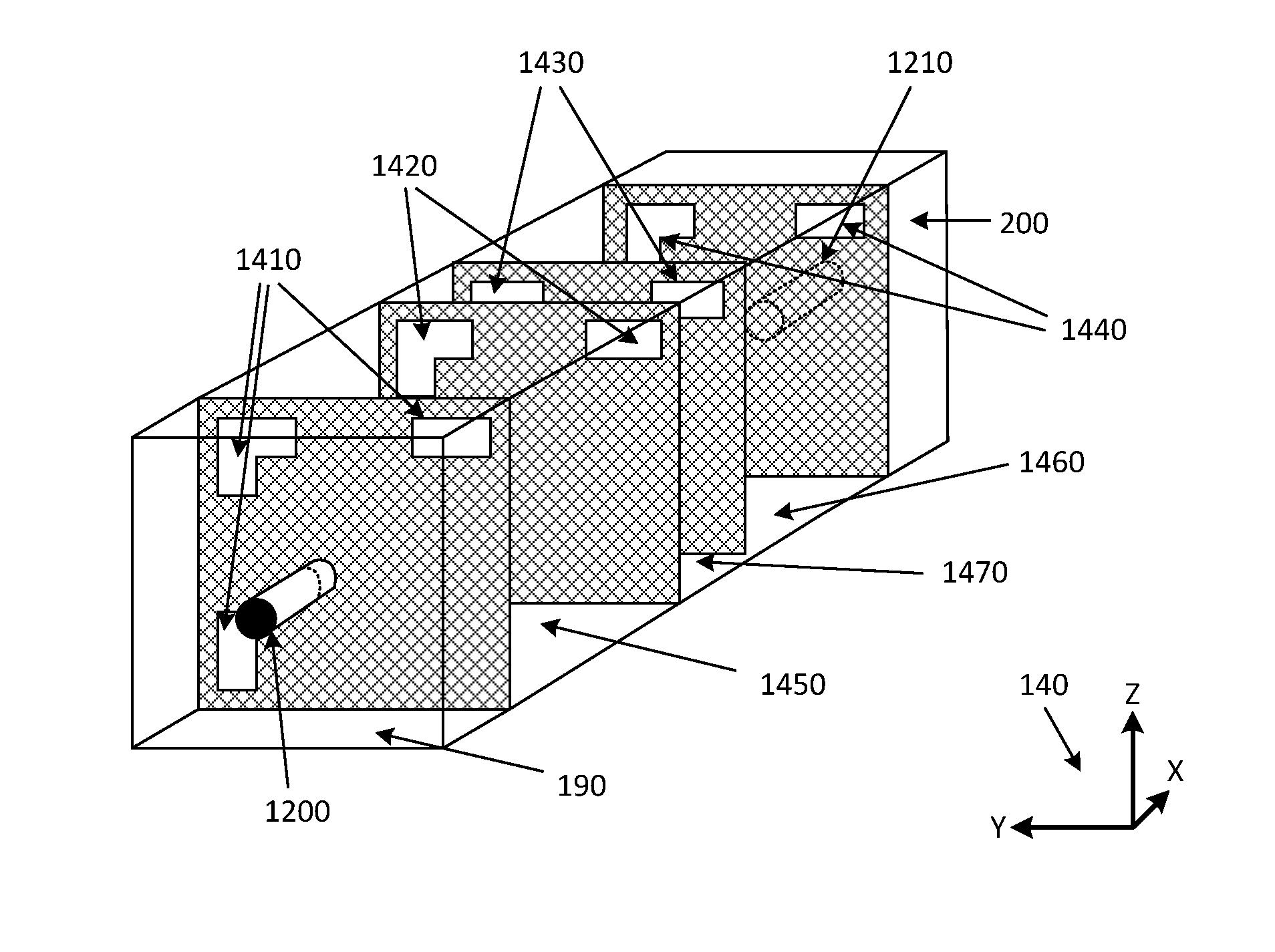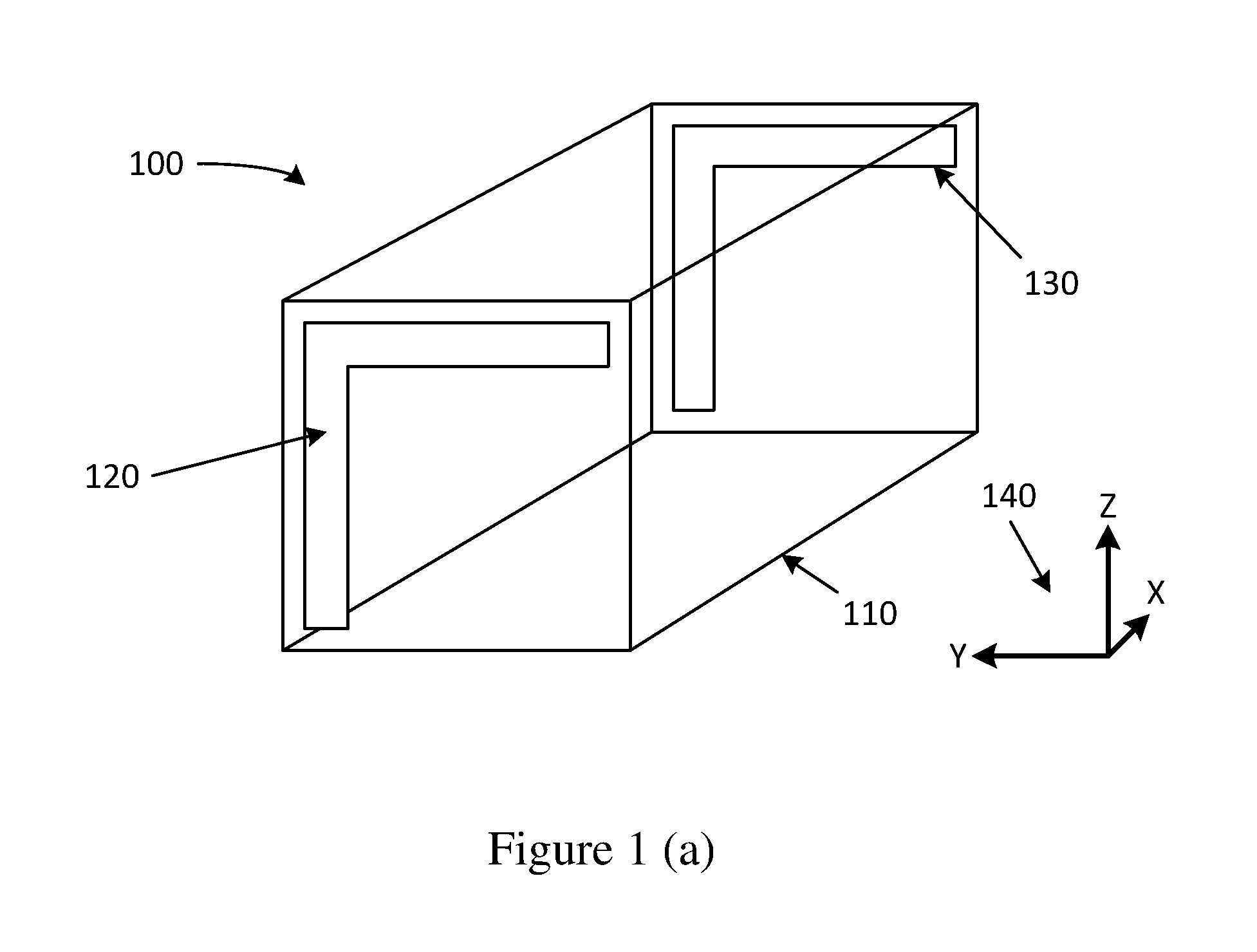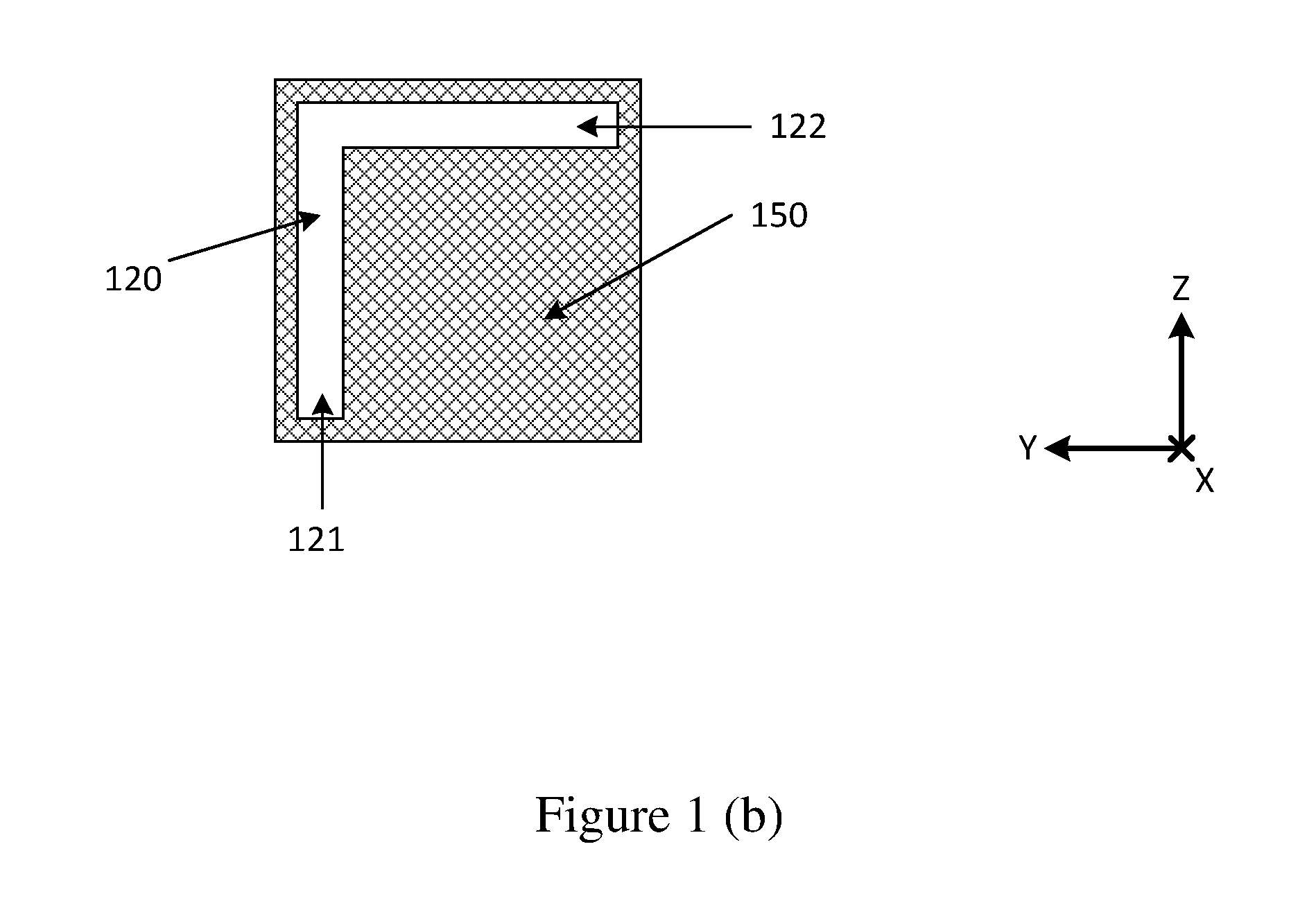Multi-Mode Filter Having Aperture Arrangement with Coupling Segments
a filter and aperture arrangement technology, applied in the field of filters, can solve the problems of large size of filter equipment, unsuitable implementation, complicated body shape, etc., and achieve the effect of precise tailoring of filter frequency response characteristics and increasing manufacturing costs
- Summary
- Abstract
- Description
- Claims
- Application Information
AI Technical Summary
Benefits of technology
Problems solved by technology
Method used
Image
Examples
Embodiment Construction
[0055]An example of a multi-mode filter will now be described with reference to FIGS. 1a and 1b.
[0056]The basis of this invention is in the use of a specific type of coupling aperture arrangement to couple signals into and out of a multi-mode resonator, whilst exciting (or coupling energy from) two or more modes, simultaneously, within that resonator.
[0057]In this example, the filter 100 includes a resonator body 110 which is encapsulated in a metallised layer (which is not shown, for clarity). At least two aperture arrangements are formed in the metallised layer: an input coupling aperture 120 and an output coupling aperture 130. These apertures are constituted by an absence of metallisation, with the remainder of the resonator body being substantially encapsulated in its metallised layer. The apertures 120 and 130 may be formed by, for example, etching, either chemically or mechanically, the metallisation surrounding the resonator body, 110, to remove metallisation and thereby fo...
PUM
 Login to View More
Login to View More Abstract
Description
Claims
Application Information
 Login to View More
Login to View More - R&D
- Intellectual Property
- Life Sciences
- Materials
- Tech Scout
- Unparalleled Data Quality
- Higher Quality Content
- 60% Fewer Hallucinations
Browse by: Latest US Patents, China's latest patents, Technical Efficacy Thesaurus, Application Domain, Technology Topic, Popular Technical Reports.
© 2025 PatSnap. All rights reserved.Legal|Privacy policy|Modern Slavery Act Transparency Statement|Sitemap|About US| Contact US: help@patsnap.com



